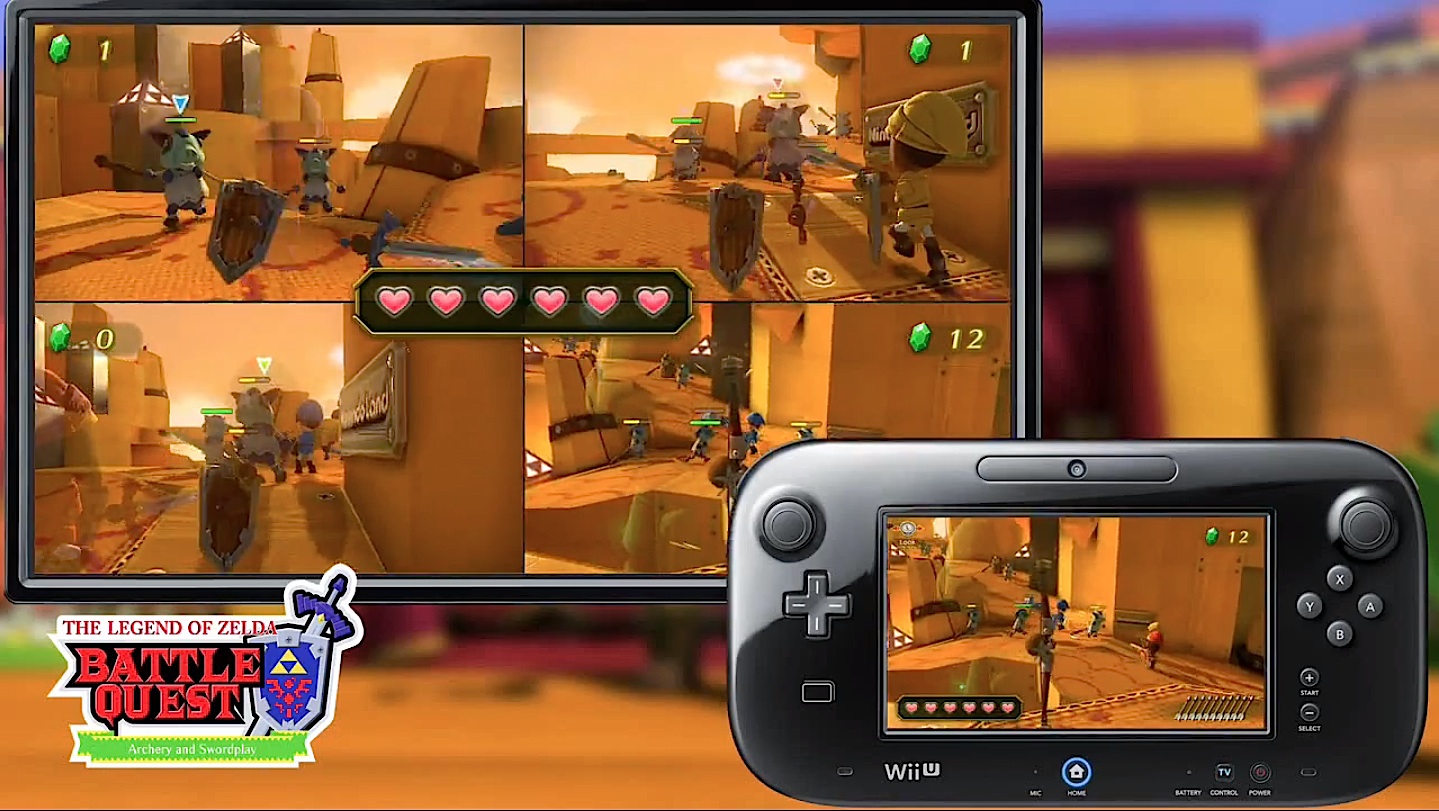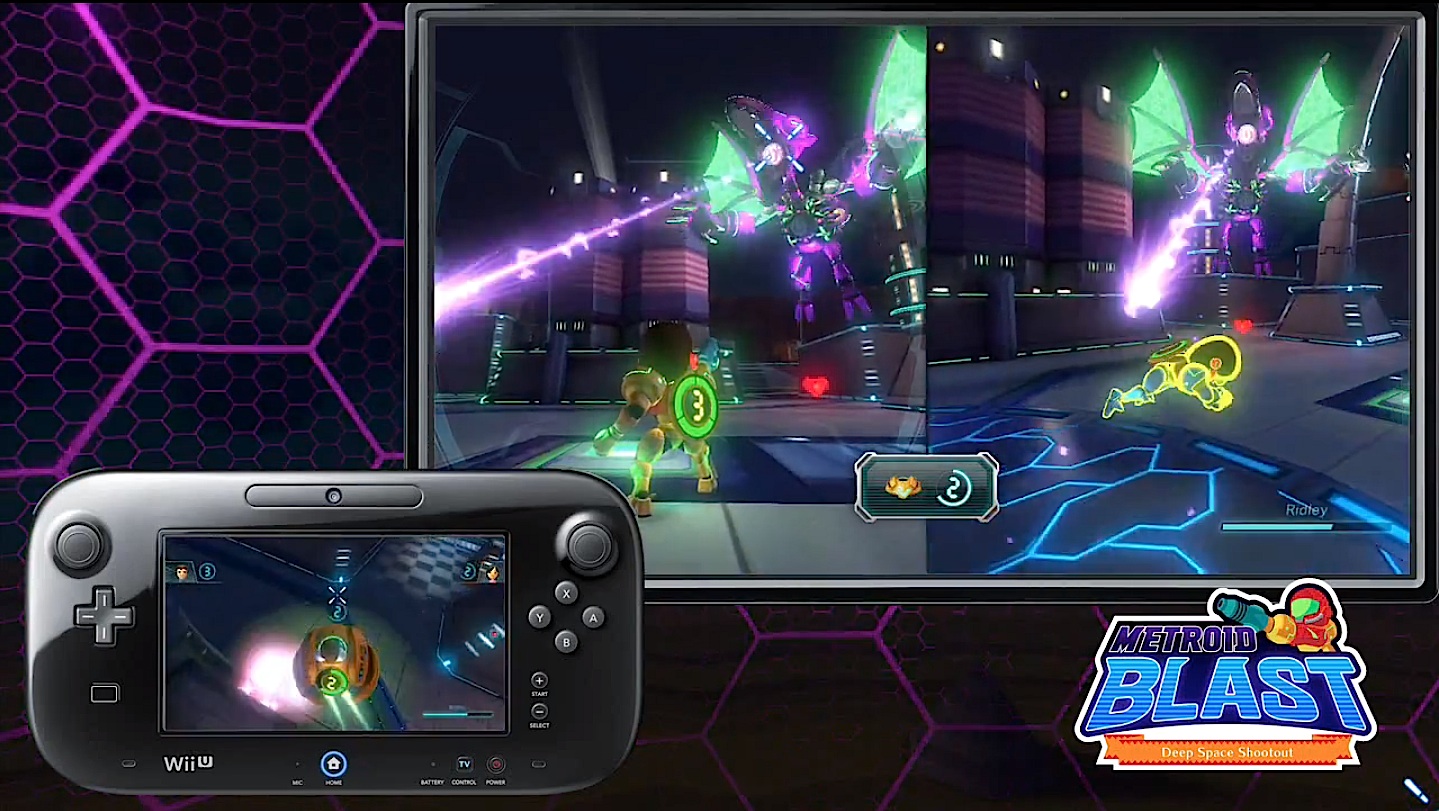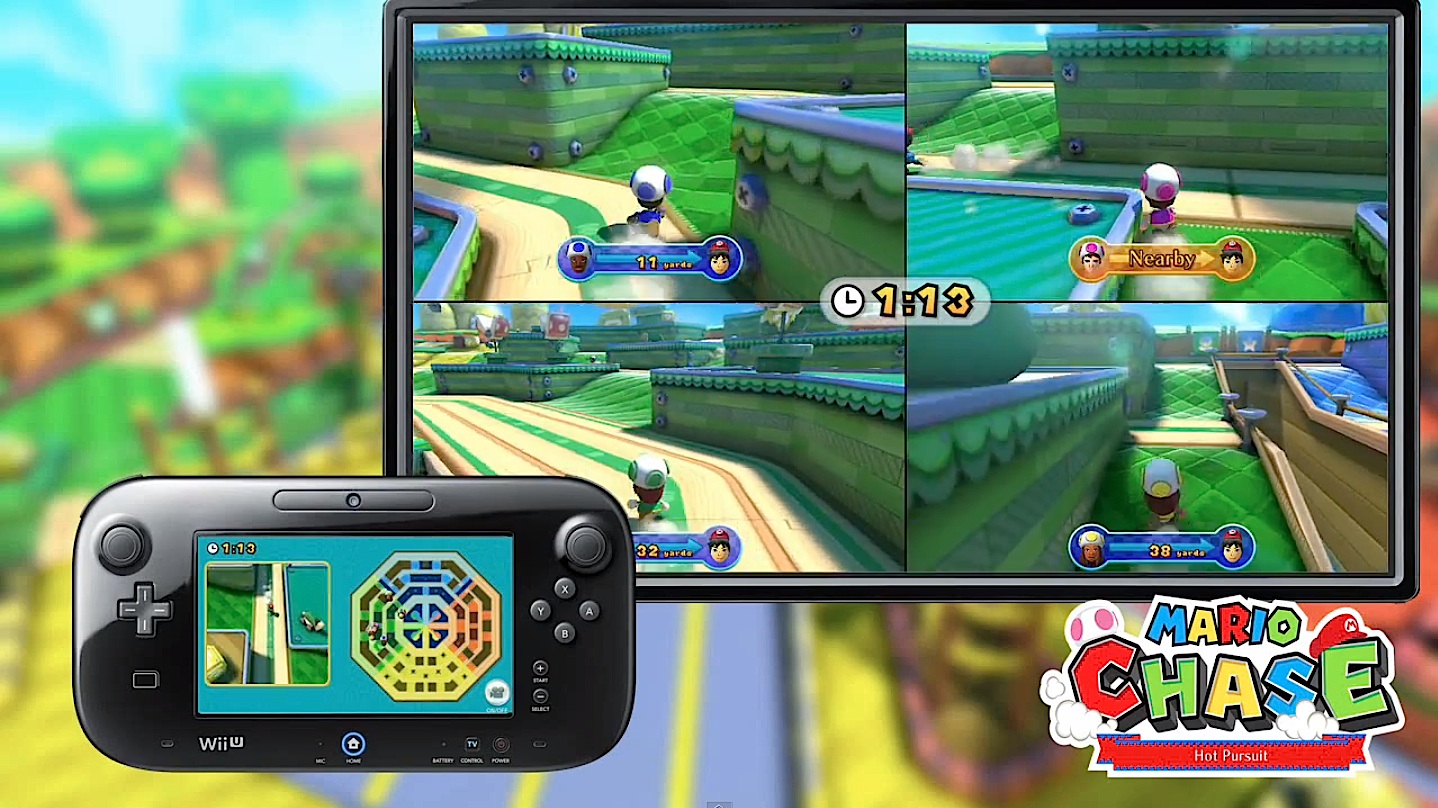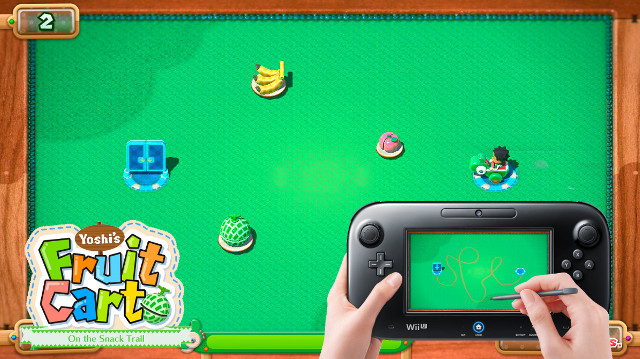Even at $60, this theme park is cheaper than tickets to Disney’s.
Nintendo Land takes some of Nintendo’s most recognizable franchises and turns them into fun, slightly bigger than bite-sized mini-games. But much more importantly, Nintendo Land—like Wii Sports before it with the Wii—is designed to help new Wii U owners understand the potential uses behind the system’s new GamePad controller.
Let’s get this out of the way: This isn’t Wii Sports. It’s not going to be a game that is going to draw in casual consumers the same way Wii Sports did six years ago. Nintendo Land is nowhere near as simple or intuitive to use. But that also means it’s a deeper game, better suited for gamers and not the average Joe or everyday Jane.
It does what it sets out to do, though, and it does that very well. And that’s to get first-day Wii U owners to have the “A-ha!” moment—the realization of how the GamePad interacts with the TV and could very well change the way games are played… maybe even more significantly than motion controls ever did.
That said, this review may seem a bit like a manual at times, but my goal here with this review—much like Nintendo’s goal was with Nintendo Land—is to get you to understand the unique opportunities the Wii U GamePad brings to the table.
The first and probably my favorite of all twelve of the mini-game theme park “attractions” available in Nintendo Land is The Legend of Zelda: Battle Quest. It puts the GamePad in the hands of one archer, while up to four players with Wiimotes can join in wielding a Master Sword to deal damage to foes. The Wiimote players slash and slice thin air to attack the oncoming goblins and other enemies on the TV screen. Meanwhile, the GamePad player must focus on the controller's screen, to take aim and strike with lined-up arrows from afar.

It’s all presented adventure-style, pushing forward in a linear way until the end objective is reached. Like many of the games in Nintendo Land, the gameplay is straightforward. Although Battle Quest isn’t the best example of cool ways to use the GamePad, it is at least a change of pace and an extremely fun game to play with friends.
Similarly, Pikmin Adventure is a top-down adventure-style game, where you participate cooperatively to reach the end goal—nothing too exciting here but still good-hearted family fun.
The excitement and action ramp up to Nintendo Land’s highest point with Metroid Blast. If Pikmin is like the teacups at a theme park, Metroid Blast is the park’s biggest rollercoaster, with three different ways to ride. Unfortunately, though, for multiple players (up to five including the GamePad) it takes quite an investment. Each player is required to have a Wiimote and Nunchuk attachment aside from the one player wielding a GamePad.

The person using the GamePad takes on Samus’s ship to shoot at enemies, or other players, while the Wiimote/Nunchuk combo players take on the role of Zero Suit-wearing Miis to battle either enemies or each other, depending on which of the three modes you choose. Both controller options are awkward in the way they handle, but once you get used to it, the gameplay is very satisfying and intense.
The team attractions aren’t the strongest examples of what funky new uses can be found for the GamePad. Solo attractions do this best, and Competitive attractions are a happy medium.
Mario Chase couldn’t possibly be simpler in its gameplay, but it’s also a complete blast. The user holding the GamePad plays as Mii-Mario and must keep running away to avoid getting caught by the other players. Up to four others can grab Wiimotes to try and tackle Mario to the ground before the time limit runs out.

Unlike the Wiimotes, the GamePad offers up a map complete with locations of the other players to help you stay just out of reach. The Wiimote players don’t afford such a luxury and instead must watch the map-less TV screen and work together by communicating to try and run into Mario. This is the first real glimpse of how the GamePad can add new twists to local multiplayer.
Luigi’s Ghost Mansion has a similar chase-and-be-chased mechanic to it, except on the GamePad there isn’t a map. Instead, you’re playing as a Ghost who is obscured on the screen until the Wiimote players flash a light on you. On the GamePad, of course, you can see where the Ghost is and must maneuver around to catch the Wiimote players offguard.
Animal Crossing: Sweet Day again is similar, but using the GamePad, you control not one but two characters armed with kitchen utensils with the sole goal of catching other players before they nab up all the candy.

Yoshi’s Fruit Cart was the first game I played, a serendipitous event because after playing it, I instantly had the realization that the GamePad provided a new take on gaming. Using the stylus, you simply draw a line to the goal on the GamePad screen to proceed. The catch is that you have to collect all the fruit to unlock the game, and you can’t see that fruit on the GamePad where you are drawing this line. Instead you have to closely watch the TV and the location of the fruit in relation to the screen’s background, and draw that line on the GamePad in hopes that your estimations were on point. You can’t do this and not be amazed initially.
Octopus Dance annoyed me like crazy at first, but once I got dancing, I had a ton of fun. It’s essentially a game of Simon Says with a dancing robot. The robot does moves and using the analog sticks and gyros in the GamePad, you mimic those moves. It adds a twist by making it important to watch the back of your character to get the moves down correctly. It starts with you watching the GamePad, and then the robot will slap you, spinning your character around, so you have to bring your eyes to the TV to watch from behind and get the moves correct. Lots of back and forth, but very cool nonetheless.
Donkey Kong’s Crash Course is an obstacle course of sorts, in which you traverse by tilting the GamePad and tapping the triggers to interact with the course. The TV shows the entire course panned all the way out, and the GamePad offers a much closer look at the action and where you are located on the massive, twisting course. I can’t say I love this one, or that it’s a great showcase of the GamePad’s uses, but it’s an interesting enough game to help build out Nintendo Land’s offerings.

Takamaru’s Ninja Castle… I couldn’t help but think Ninja Nick Tan would be in love with this mini-game, which has you turning the GamePad vertically—or what we’d call on our cell phones to be portrait mode—and swiping the screen to launch deadly shurikens at ninjas trying to hide behind trees. It’s got a linear stage progression, with multiple areas and increasingly difficult ninjas. There are also plenty of hidden objects and unlockables to look for.
Captain Falcon’s Twister Race is a tilt-to-turn racing game based in the world of F-Zero. Here, you must keep an eye on the GamePad until you pass under a tunnel. Then, you have to switch to watching the TV to make sure you come out of the tunnel safely.
Balloon Trip Breeze has you swiping from behind a man floating along with balloons to blow the wind at his back and steer him around obstacles to collect balloons and reach the goal. You can watch either the GamePad or the TV for this, but the GamePad gives a zoomed-in look at where you are in the level, plus that’s where you will be swiping.
While half of the mini-games offer multiplayer in one way or another, Attractions Tour is a multiplayer mashup of all of the games, served in succession and in a round-by-round format. Even the solo games are thrown into the mix, and players will take turns taking on these challenges trying to out-score one another. Simply choose a time limit, and the game will randomize the rest. One player will be asked to select the mini-game and what player they’d like to challenge. It basically turns Nintendo Land into more of a party game, despite it already being accessible for groups.
In the end, the twelve mini-games and the randomness of the Attractions Tour, along with a host of unlockables will keep Nintendo Land interesting for a long time—much longer than Wii Sports stayed appealing for. However, it’s not going to draw in masses of casual consumers because the gameplay, while still simple at its core, is more demanding. This is a good thing, though, because it makes for much more enjoyable and challenging experiences throughout.
Nintendo Land is available as a pack-in with the Wii U Deluxe Set, but it’s a good enough game on its own to warrant a purchase for anyone buying the Wii U Basic Set. Plus, it’s an effective tool for users as they learn the ins and outs of the Wii U GamePad. There’s plenty of value in that alone and having an entire theme park of fun games based on Nintendo’s best franchises makes the deal that much sweeter. Sweet enough to call Nintendo Land a must-own for new Wii U owners.
-
Each of the twelve games show what unique things the GamePad can do
-
Extremely fun and accessible for new users...
-
...while having enough depth for more intense gaming
-
So many great Nintendo franchises in one place
-
But it's no Wii Sports and won't draw in casuals by the drove
-
You must own four wiimotes and nunchucks to get the most out of the multiplayer
-
That's an expensive investment after buying an expensive new Wii U
-
I wish the unlockables were more useful.
-
Why won't Monita just shut up and let me play?!?!






